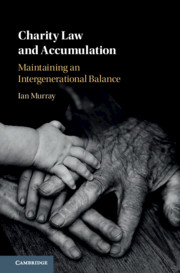Refine search
Actions for selected content:
30 results
Chapter 3 - HASS in the early years: Connecting the Early Years Learning Framework and the Australian Curriculum
- from Part I - Humanities and Social Sciences curriculum
-
-
- Book:
- Making Humanities and Social Sciences Come Alive
- Published online:
- 02 August 2025
- Print publication:
- 14 August 2025, pp 39-56
-
- Chapter
- Export citation
11 - Assessing, planning for and communicating learning
-
- Book:
- Intentional Practice with Infants and Toddlers
- Published online:
- 17 June 2025
- Print publication:
- 12 June 2025, pp 282-308
-
- Chapter
- Export citation
Part I - Foundations of International Human Rights Law
-
- Book:
- International Human Rights Law
- Published online:
- 10 April 2025
- Print publication:
- 01 May 2025, pp 1-154
-
- Chapter
- Export citation
2 - Human Dignity
- from Part I - Values
-
-
- Book:
- The Cambridge Handbook of Constitutional Theory
- Published online:
- 27 March 2025
- Print publication:
- 24 April 2025, pp 23-37
-
- Chapter
- Export citation
Chapter 9 - Siting and Installation
-
- Book:
- Wind Turbines
- Published online:
- 24 January 2025
- Print publication:
- 19 December 2024, pp 214-247
-
- Chapter
- Export citation
Business elites and the political economy of philanthropy in West and Central Africa
-
- Journal:
- The Journal of Modern African Studies / Volume 62 / Issue 3 / September 2024
- Published online by Cambridge University Press:
- 28 March 2025, pp. 223-246
- Print publication:
- September 2024
-
- Article
-
- You have access
- Open access
- HTML
- Export citation
“Making the Peaks Higher”: Foundations of Stanford University’s Growth, 1910–1960
-
- Journal:
- Enterprise & Society / Volume 26 / Issue 1 / March 2025
- Published online by Cambridge University Press:
- 16 February 2024, pp. 218-248
- Print publication:
- March 2025
-
- Article
- Export citation
11 - The State and Its Riches
-
- Book:
- Righteous Politics
- Published online:
- 10 August 2023
- Print publication:
- 17 August 2023, pp 300-338
-
- Chapter
- Export citation
28 - Late Modernism
- from Part III - Situating US Modernism
-
-
- Book:
- The Cambridge History of American Modernism
- Published online:
- 13 July 2023
- Print publication:
- 20 July 2023, pp 478-492
-
- Chapter
- Export citation
Chapter 10 - The Medici Model
- from Section 2 - The Financial Determinants of Discovery
-
- Book:
- The Trajectory of Discovery
- Published online:
- 06 April 2023
- Print publication:
- 13 April 2023, pp 56-60
-
- Chapter
- Export citation
8 - Ontological and Epistemological Foundations of Human Rights
- from Part II - Natural Law Foundations of Human Rights Obligations
-
-
- Book:
- The Cambridge Handbook of Natural Law and Human Rights
- Published online:
- 03 November 2022
- Print publication:
- 17 November 2022, pp 119-132
-
- Chapter
- Export citation
15 - Article XIX of the GATT 1994
-
- Book:
- WTO Agreement on Safeguards and Article XIX of GATT
- Published online:
- 19 May 2022
- Print publication:
- 16 June 2022, pp 369-374
-
- Chapter
- Export citation
1 - Foundations and Functions of International Law
-
- Book:
- German Practice in International Law
- Published online:
- 19 May 2022
- Print publication:
- 09 June 2022, pp 1-19
-
- Chapter
- Export citation
The Larger Gifts of Taxation: Foundations and Tax Reform in the Jim Crow South
-
- Journal:
- Journal of Policy History / Volume 34 / Issue 2 / April 2022
- Published online by Cambridge University Press:
- 05 April 2022, pp. 143-179
-
- Article
- Export citation
Chapter 9 - Aristotle on the foundations of sublunary physics
- from Part II - Physics and optics
-
- Book:
- Explorations in Ancient and Modern Philosophy
- Published online:
- 24 March 2022
- Print publication:
- 31 March 2022, pp 286-304
-
- Chapter
- Export citation
9 - Enhanced Agency Costs
- from Part III - Charities and Accumulation Reformed
-
- Book:
- Charity Law and Accumulation
- Published online:
- 23 July 2021
- Print publication:
- 05 August 2021, pp 257-271
-
- Chapter
- Export citation

Charity Law and Accumulation
- Maintaining an Intergenerational Balance
-
- Published online:
- 23 July 2021
- Print publication:
- 05 August 2021
4 - Democratizing Money
-
- Book:
- Democratizing Global Justice
- Published online:
- 21 May 2021
- Print publication:
- 10 June 2021, pp 80-101
-
- Chapter
- Export citation
17 - The High-Tech Sector
- from Part IV - Key Issues in Various Sectors
-
-
- Book:
- The Israeli Economy, 1995–2017
- Published online:
- 04 February 2021
- Print publication:
- 18 February 2021, pp 527-554
-
- Chapter
- Export citation
Chapter 10 - Festivals and Benefactors
- from Part IV - Benefactors and the Polis under Rome
-
-
- Book:
- Benefactors and the Polis
- Published online:
- 21 January 2021
- Print publication:
- 18 February 2021, pp 243-264
-
- Chapter
- Export citation
